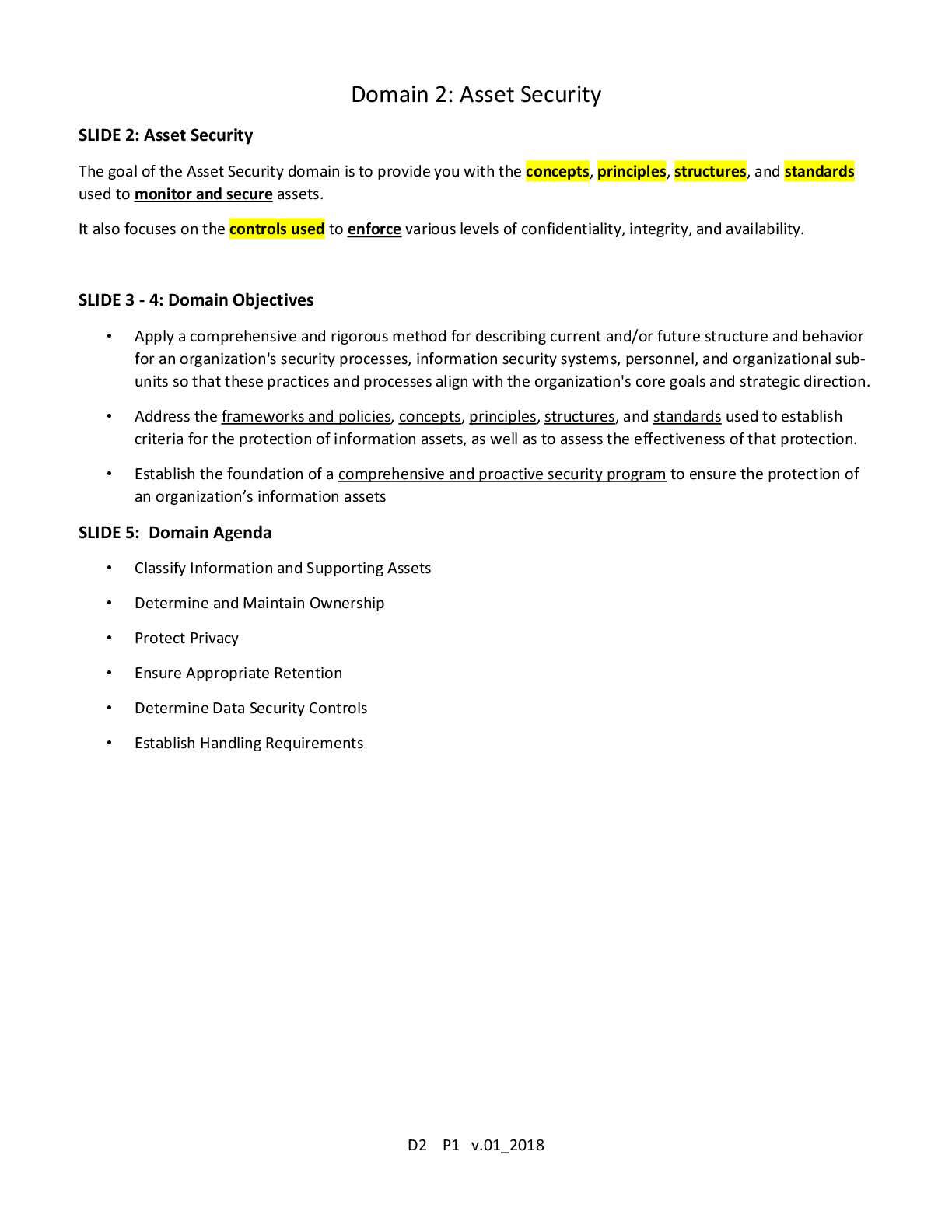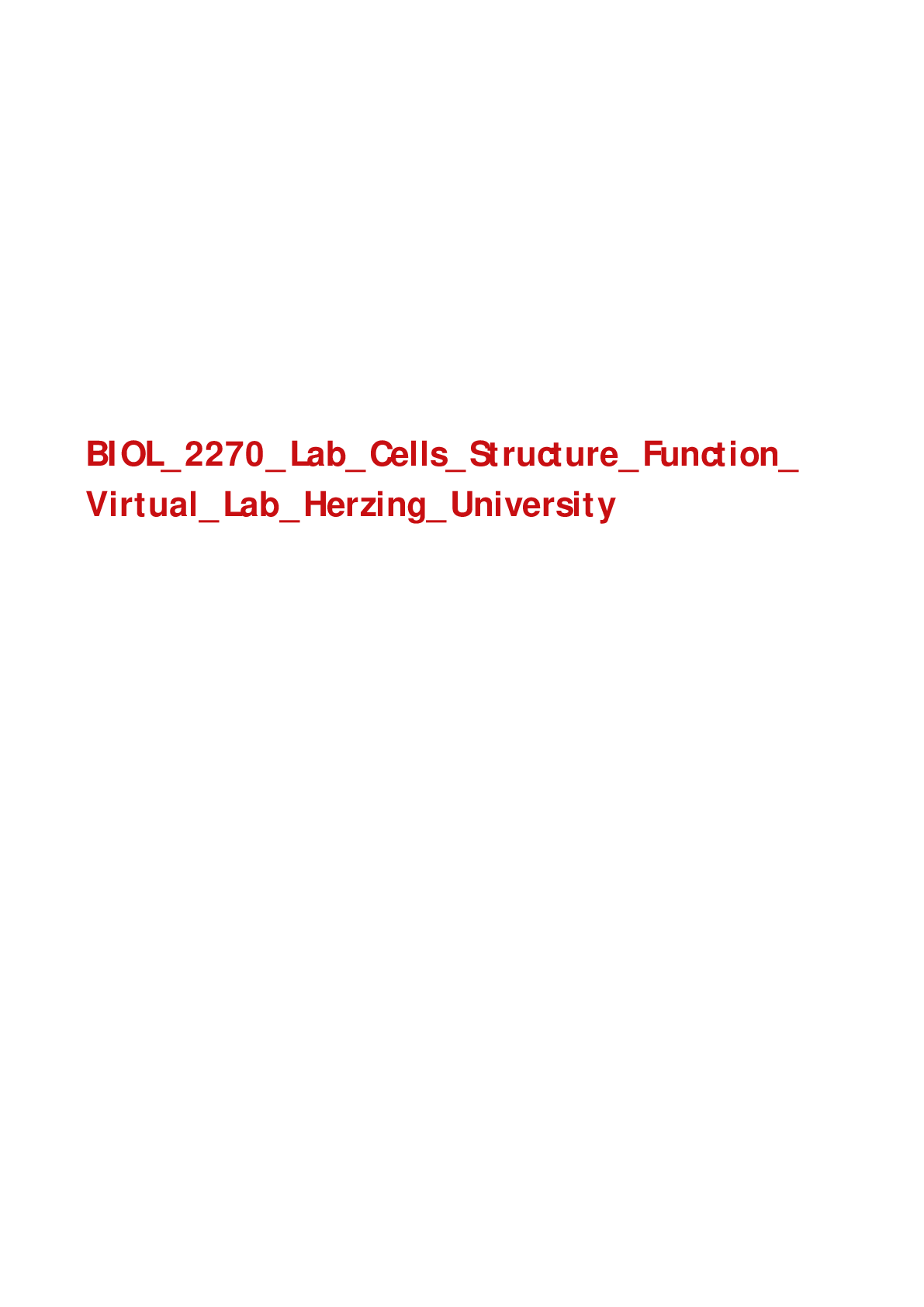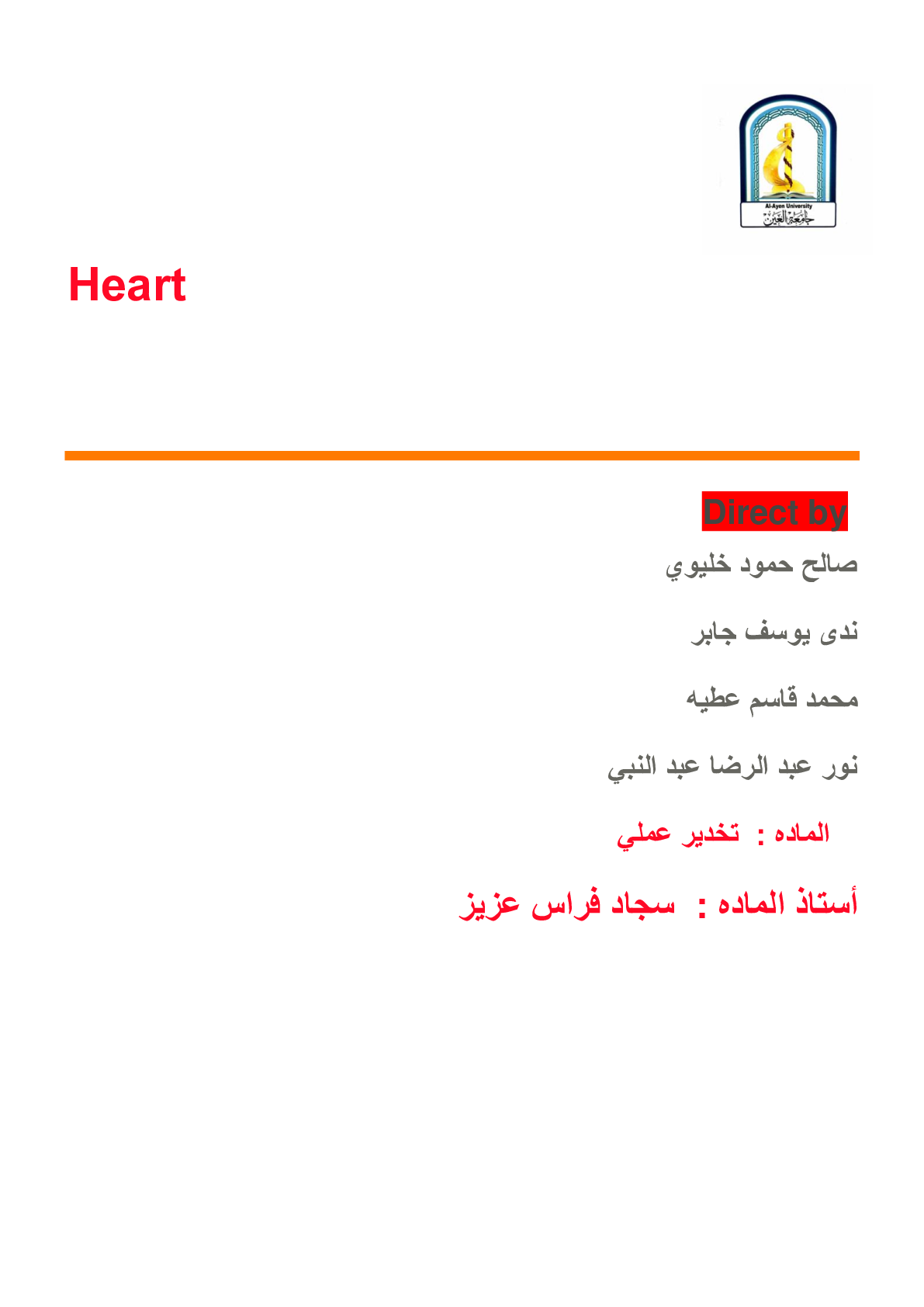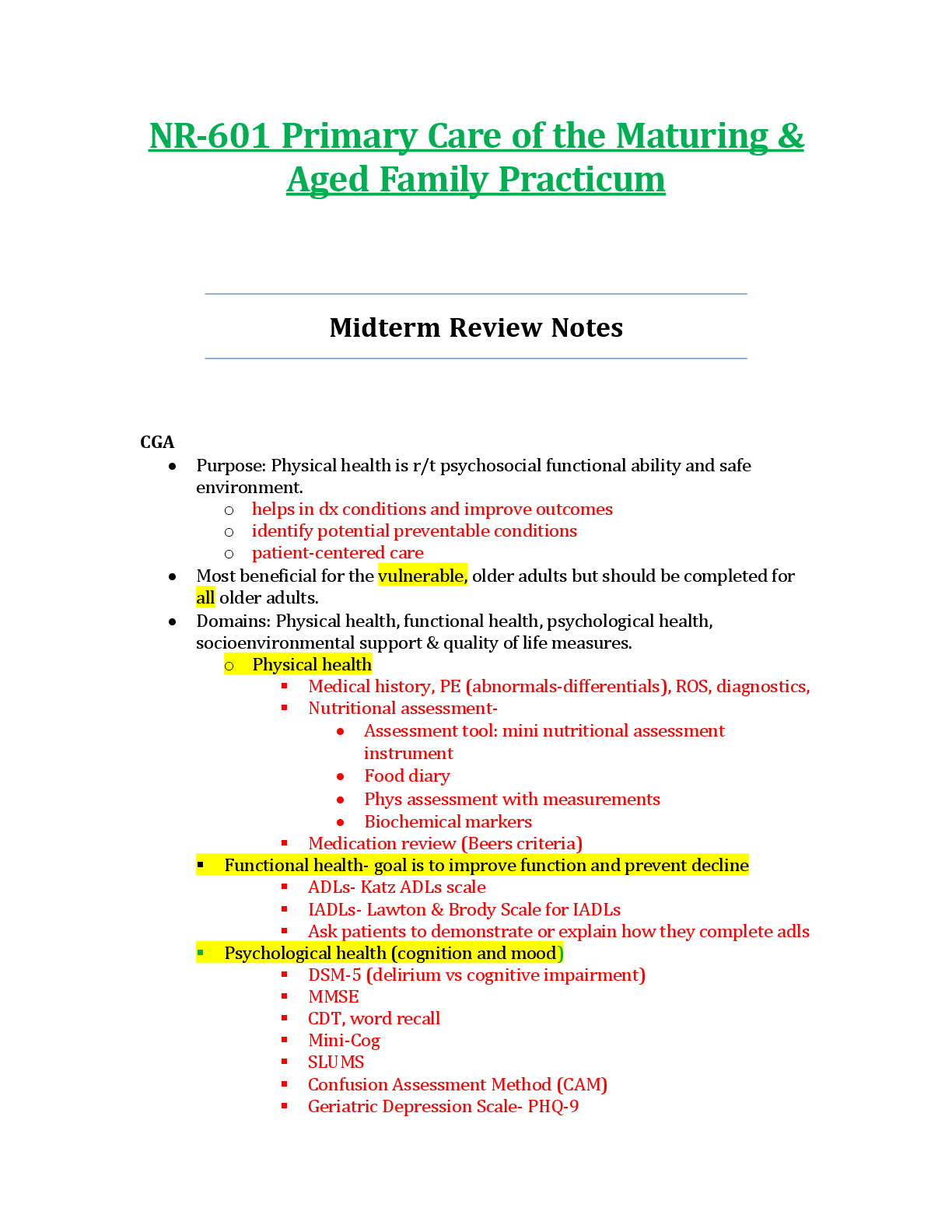Food and Nutrition > Study Notes > Nutrition Proctored PART 1 ,2 AND 3(BUNDLE) WITH COMPLETE GRADE A SOLUTIONS 2020 (All)
Nutrition Proctored PART 1 ,2 AND 3(BUNDLE) WITH COMPLETE GRADE A SOLUTIONS 2020
Document Content and Description Below
Part 1: General Notes Part 2: Focused Review Notes Part 3: ATI Rational with Additional/Supported Information PART 1: GENERAL NOTES (Important Facts) • Be wary of questions regarding children dr ... inking too much milk i.e. more than 3-4 cups of milk each day. Too much milk intake reduces intake of other essential nutrients, especially iron. Watch for anemia with milk-aholics. • Vitamin D’s presence is required by the parathyroid gland, in order for it to function. • If the patient is taking digoxin or K-supplements, avoid salt substitutes because many are potassium based • Potassium Sources: bananas, potatoes, citrus fruits • No milk (as well as fresh fruit or veggies) on neutropenic precautions. • Nondairy sources of calcium include RHUBARB, SARDINES, COLLARD GREENS 24 • Nonfat milk reduces reflux by increasing lower esophageal sphincter pressure • Yogurt has live cultures, so do not give to immunosuppressed patients • No phenylalanine with a kid positive for PKU (no meat, no dairy, no aspartame). • Acid Ash diet: cheese, corn, cranberries, plums, prunes, meat, poultry, pastry, bread • Alk Ash diet: milk, veggies, rhubarb, salmon PART 2: Focused Review Notes Manifestations of Vitamin A Toxicity Can cause teratogenic effects on fetuses Blurred vision Bone pain or swelling Hypercalcemia ICP Liver damage Skin peeling, itching Nausea and vomiting Abnormal softening of the skull bone (children) and bulging fontanels Planning Care for a Client Who Follows Seventh-Day Adventist Dietary Laws Vegetarianism o Do not consume animal products of any type INCLUDING eggs and milk products. o Vitamin B12 and Vitamin D supplements may be needed with a pure vegan diet. Vegan diets are adequate in protein due to intake of nuts and legumes (dried peas and cooked beans). Initiating Continuous Enteral Feeding This is recommended for critically ill patients because it is associated with small residual volumes, and a lower risk of aspiration and diarrhea. Residual volumes should be measures q4-6hrs. Feeding tubes should be flushed with water q4hr to maintain patency and hydration. If patient’s gastric volume exceeds 500ml, the continuous feeding should be HELD and tolerance reassessed. o In children, residual volumes should be measured and held if the amount is equal to or greater than ¼ the prescribed feeding amount. Residual should be returned and the amount rechecked in 30min to 1hr. Recommendations for Nutritional Supplement Add skim milk to powder milk (double strength milk) Use whole milk instead of water recipes Add cheese, peanut butter, chopped hard-boiled eggs, yogurt. Dip meats in eggs or milk and coat with bread crumbs before cooking. Nuts and dried beans are significant sources of protein great alternatives to dairy allergy or lactose intolerance! Assessing Caloric Intake Toddlers: 1 to 3 years old o Limit 100% juice 4 to 6oz a day o The 1 to 2-year-old requires whole cow’s milk to provide adequate fat. o Food serving size is 1 tablespoon for each year of age. Preschoolers: 3 to 6 years old o Preschoolers need 13 to 19 g/day of complete protein. o 1 tablespoon per year of age for size of foods. o May switch to skin or 1% low-fat milk after 2 years. School-Age Children: 6 to 12 years old o Weight loss program is directed for children 40% overweight. Adolescence o Energy requirements average 2,000 calorie/day for a 12 to 18-year-old female. o Energy requirements average 2,200 to 2,800 calorie/day for a 12 to 18-yearold male. o Average U.S. adolescent consumes a diet deficient in folate, vitamin A and E, iron, zinc, mag, calcium, and fiber. Adulthood and older adulthood o Need a balanced diet that consists of 40% to 55% carbs, and 10-20% fat (with no more than 30% fat). o A 24 hr dietary intake is helpful in determining the need for dietary education. - Use whole grains, select orange and dark green leafy vegetables, avoid fruits with added sugar (make half your plate vegetables and fruits), use vegetable oils, 132-362 discretionary calories are permitted per day. MEN CALORIE INTAKE WOMEN CALORIE INTAKE 19 to 30 years old: 2,400 calories 19 to 30 years old: 2,000 calories 31 to 50 years old: 2,200 calories 31 to 50 years old: 1,800 calories 51+ years old: 2,000 calories 51+ years old: 1,600 calories Teaching about High-Fiber Food Sources Beans Vegetables Oats Whole grains Cereals Nuts, seeds Raw or dried fruits Barley Flaxseed Avocado Chickpea Brown Rice Sweet Potato/Reg. Potato Quinoa Priority Cholesterol Levels to Report HDL (good cholesterol) should have levels greater than or equal to 60mg/dl LDL (bad cholesterol) is less than 130mg/dl. Optimal cholesterol level is less than 200mg/dl. Prioritizing Care for Intermittent Enteral Feeding Formula is administered q4-6hr in equal portions of 250 to 400 ml over a 30-60min time frame usually by gravity drop or pump. Residual volumes should be measured prior to initiating the feeding and held if the amount is greater than the amount stated in the prescription. Tube should be marked with ink or tape and checked to make sure it has not migrated. Assess bowel sounds. Dysfunction can indicate a need for alternate forms of nutrition. Elevate head of bed 30 degrees and for at least 30 to 60 minutes after. Menu Choices for Preventing Aspiration Encourage small bites and thorough chewing. Pills should be taken with at least 8oz of fluid (can be thickened). Avoid thin liquids and sticky foods. Interventions for Diarrhea Caused by Radiation Therapy Ensure adequate intake of liquids to replace losses. Avoid foods that exacerbate diarrhea (foods high in roughage) Consume foods high in pectin to increase bulk of the stool. Limit caffeine, hot or cold drinks, and fatty foods. Evaluating Teaching about Complete Proteins Complete proteins are from animal sources and soy They contain sufficient amounts of all 9 amino acids. Folate Intake During Pregnancy Helps prevent neural tube defects in utero (Folic acid is the synthetic form). Deficiency causes spina bifida, anencephaly. Take 400-800 mcg a day (According to the internet, does not say anywhere in ATI) Food Choices for a Client Who Practices Orthodox Judaism Special food preparations (kosher kitchens) NO MEAT AND MILK TOGETHER Guidelines state that animal slaughter must be “humane” and do not waste meat. They avoid all pork and shellfish products. Heme Sources of Iron Meat Fish Poultry Appropriate Food Choices for a Toddler Prefer finger foods due to autonomy Prefer plain foods rather than mixture foods, but usually like macaroni, spaghetti, and pizza. Teaching a Client Who Has Dumping Syndrome Recommend small, frequent meals. Recommend protein and fat at each meal. Avoid concentrated sugar and restrict lactose intake. Suggest that the client consume liquids 1 hour before [Show More]
Last updated: 3 years ago
Preview 1 out of 11 pages

Buy this document to get the full access instantly
Instant Download Access after purchase
Buy NowInstant download
We Accept:

Reviews( 0 )
$11.00
Can't find what you want? Try our AI powered Search
Document information
Connected school, study & course
About the document
Uploaded On
Nov 13, 2021
Number of pages
11
Written in
All
Additional information
This document has been written for:
Uploaded
Nov 13, 2021
Downloads
0
Views
161

